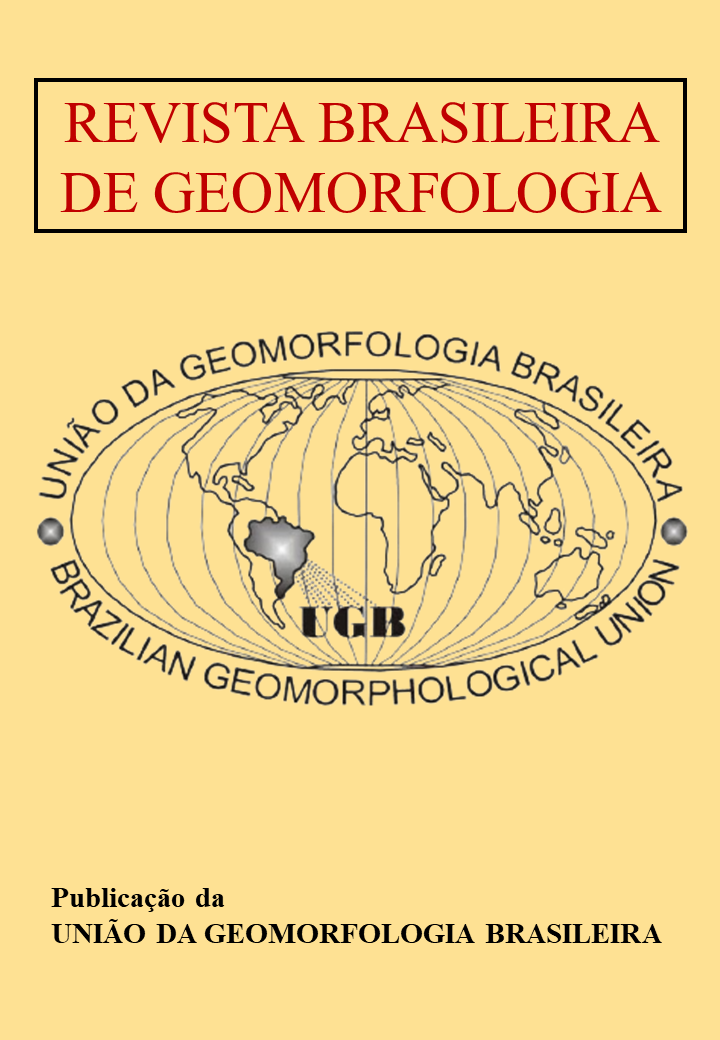Morphopedological approach applied to the prevention of gullies: A case study in the Itiquira River basin - Alto Pantanal - Mato Grosso
DOI:
https://doi.org/10.20502/rbgeomorfologia.v24i00.2349Keywords:
Morfopedologia, Susceptibilidade erosiva, Erosão de ravina e voçoroca, Planalto Itiquira-TaquariAbstract
In this work, the morphopedological approach and the methodological script focused on the classes of susceptibility to linear erosion were portrayed with a view to the preventive control of gullies, demonstrated by results obtained in the hydrographic basin of the Itiquira river, which has its sources in the Itiquira-Taquari plateau, and flows into a wide sedimentary depression and plain of the Pantanal of Mato Grosso. It constitutes a representative region of the most sensitive to erosion, dominated by pastures and grain monocultures, composed of sedimentary rocks and very erodible soils, with a high production of sediments that flow into the Paraguay River in the middle of the Pantanal. The methodological procedures involved techniques of integrated interpretation of the factors of the physical environment and cartographic representations, using three levels of treatment used: 1. Surveys, 2. Diagnoses and 3. Mappings. The results were expressed in cartographically represented products, with the identification of four morphopedological compartments that served as a basis for indicating erosion processes and determining areas with different susceptibility to linear erosion processes, supporting preventive actions and consequent potentialities and restrictions on land use.
Downloads
Downloads
Published
How to Cite
Issue
Section
License

This work is licensed under a Creative Commons Attribution-NonCommercial 4.0 International License.
Author (s) retain copyright and grant the journal right of first publication with the work simultaneously licensed under the Creative Commons Attribution License that allows sharing the work with recognition of its initial publication in this journal.








